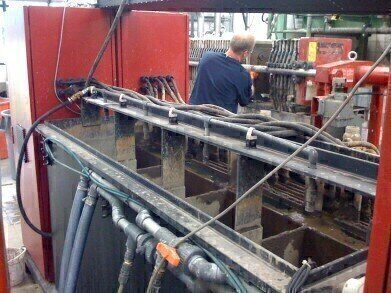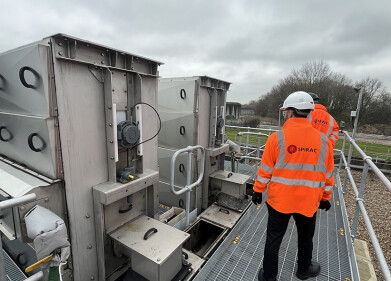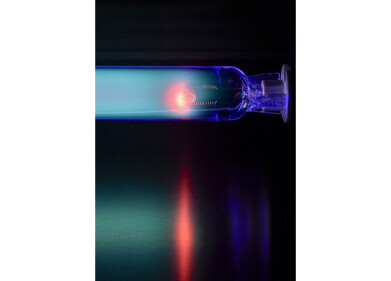Water/Wastewater
Electro-Coagulation Treats Water in Holland
Jan 21 2011
With ever increasing demands to minimise pollutants in water effluent arising from industrial processes, Aquaco water recycling (UK) can offer a solution which works well in many industries.
This is the Red Box Electro Coagulation system whereby contaminants are flocculated by an electrical process into a size which can then be filtered, pressed and disposed of. The flocculation process in the reactor is based on electrolysis. When the installation is switched on, air is blown through the water in the reactor vessel. This is to keep the water in motion and to prevent solids sinking to the bottom. Every thirty seconds an extra boost of “cleaning-air” is blown through the water.
The contaminated water flows from the reactor into the electro-coagulation or flocculation vessel. In this vessel there are three level sensors which control water levels and pumps.
In a typical system, the reactor contains Fe- (iron) and Al- (aluminium) electrodes, although other types of electrodes can solve different problems . Four of them are connected to the anode (+) and the other four are connected to the cathode (-). The voltage-level varies between nine and eleven Volts.
The Fe- and Al- electrodes connected to the anode are slowly converted into Fe203 and AL2(0H)3. The resulting roughly formed flocks provide a place for any contaminant in the water to attach to. The dissolved contamination is connected to the flocks and is transformed into non-dissolvable particles. These particles can easily be separated from the treated water by filtration.
Above the flocculation vessel there is a sprinkler. The sprinkler controls the foam-level in the vessel. The system transfers the contaminant, now flocculated into large particles, and water mix in to a filter press which is closed by a hand operated or automatic hydraulic system.
The filter press allows the clear water to run to tank or drain while pressing the flocculated contaminant into a cake which is light and easily handled for disposal.
A typical successful installation is at the large Forbo Novilon BV works in Eastern Holland. Forbo prints vinyl but the effluent to be treated would be similar to that of any printing works.
The printing rollers are washed down with water and the waste has in the past then been passed though a membrane filter. The concentration of ink in the water would vary depending on the amount of water used in the wash down process by a particular operative.
The membrane filter tended to become blocked by the ink and needed regular maintenance at a significant cost to meet the regulations for disposal of effluent. The flow rate required was 4 cubic meters per day or 200 litres per hour, which involved the use of one large Red Box to treat the water by electro- coagulation. As the concentration of ink is high from the wash down process, the effluent is diluted by 4 times before treatment by recycling clean output water from the system back into the raw effluent.
Effluent is stored in a pre-treatment tank from where it is pumped into the reactor tank at the required rate by the control panel in the Red Box.
pH is important to the process and, where required, a separate pH corrector tank can be installed, also controlled by the Red Box. Voltage and current are run across the electrodes in the reactor vessel. They are controlled by the transformer and rectifier in the Red Box. The system automatically adds brine to the reactor vessel to increase conductivity as required.
The chemical process takes place in one half of the reactor vessel while the other half acts as a settlement tank before the coagulated contaminants and water are pumped at a controlled rate to the filter press.
The filter press is operated automatically. The clear water runs away to drain whilst the coagulated contaminants are left in the filter cloths in the press forming a cake.
When the press is full, it is opened releasing the pressure and the cake is removed and taken away for disposal. Aquaco will process a sample of effluent at no charge to demonstrate the suitability of the system for a particular site. Aquaco can then supply a trial Red Box system on a rental basis to run at a customer’s plant prior to any capital investment in a new system.
Typical industries where the Red Box has resolved effluent problems include transport (vehicle wash down), surface treatment, textile, printing, chemical and waste disposal.
Events
May 13 2024 Munich, Germany
May 23 2024 Beijing, China
May 23 2024 Beijing, China
Jun 10 2024 Algiers, Algeria
Jun 10 2024 Frankfurt, Germany













